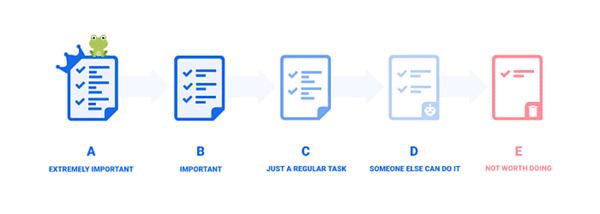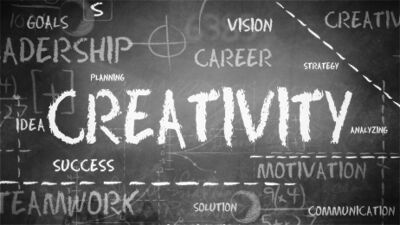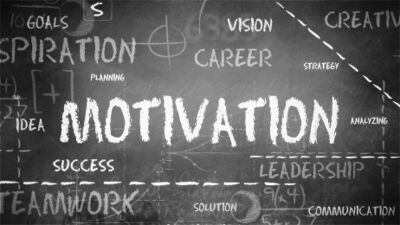5 Methods for Effective Meetings With Your Team (Guest blog)
To be effective, the meeting has to be organized properly. There are techniques that can help you have more productive meetings.
Does your work schedule include a lot of meetings? If so, you’re aware of the fact that some meetings turn out to be quite pointless.
But, it doesn’t have to be this way. Having an effective meeting means:
- Having a clear purpose and goal of the meeting
- Creating a meeting agenda
- Proper organization of the time you spend on the meetings.
When preparing an important meeting, these three qualities should be your focus of attention. To have effective meetings, you need to change the way you arrange them.
We bring you some of the most beneficial methods.
The time blocking planner
One of the techniques you may find useful is time blocking. This method includes:
- Creating a to-do list - the meeting agenda
- Choosing the specific time you’ll devote on the tasks from your list - during the meeting
- Blocking time for your tasks - adding your tasks to your calendar.
The time blocking planner is convenient because you’ll have a clear time schedule, divided into time blocks. Therefore, this planner will help you set your priorities and chase your meeting’s goal. You can either split your typical workday into time blocks or use this method when arranging an effective meeting.
For example, if you’re planning on covering several smaller tasks during your meeting, you can write them down in the form of a to-do list. All these tasks are part of your meeting time block.
So, how long should each meeting time block last? It depends on the meeting’s importance. For instance:
- 5 minutes is enough for a daily standup,
- at least 15 minutes for a weekly standup,
- and 30 minutes for your regular team meeting.
You don’t need to bother with making these planners yourself. Instead, you can find time blocking templates online and pick the one that suits you.
The Pomodoro technique
Another method that can help you organize the time you spend on the meetings is the Pomodoro technique.
Why is it useful? Because it splits your workday into 25-minute work sessions (pomodoros) and 5-minute break.
The idea behind this method is that you’ll stay focused during the 25-minute work session. Thus, your work will be more productive and you’ll get rid of any distractions.
That means that your meeting should last 25 minutes as well. When the meeting begins, you need to set the timer for 25 minutes. Then you can focus all your attention at the meeting. Since you know that you’ll hear an alarm after 25 minutes, you don’t need to worry about the time.
Concentrate on more important topics, such as the meeting’s goal. After the 25-minutes meeting, be sure to take a break for 5 minutes.
Having regular breaks is crucial because they’ll help you enhance your performance. After all, you’ll feel like you have more energy for your next tasks and meetings. Then your meeting will be more effective, too.
The Kanban technique
Here’s an interesting technique that can improve your meeting’s time management - Kanban.
This is an ideal option for your meetings since Kanban gives you an opportunity to track the progress of your tasks.
You can try it in the form of project management software, using a pen and paper or simply with a whiteboard and sticky notes.
Let’s explain how it works. You need to create several columns and then move your tasks from stage to stage. For example, you can have four columns for your meeting:
- Backlog - you write down all the tasks you’d like to cover during the meeting. Since you don’t have time for all, think about your priorities and choose only a few of them.
- To Do - this column should contain all your necessary tasks for the meeting, such as time-sensitive things to do. These are the ones you moved from the first column.
- In Progress - start evaluating these tasks at your meeting.
- Done - once the meeting is over and you’ve finished the significant tasks, shift them to this column.
Monitoring the progress of your tasks means that your meetings will be more effective and this leads to better results.
The “Eat the frog” technique
We promise that you won’t have to eat any frogs when implementing this method.
In fact, this technique got its name from Mark Twain’s quote:
“Eat a live frog first thing in the morning and nothing worse will happen to you the rest of the day.”
Speaking of your work, the “frogs” are the tasks we’re afraid to do. They’re usually:
- Extremely difficult tasks
- Extremely important tasks
- Extremely important and difficult tasks.
Therefore, you need to take care of more complicated tasks first thing you get to work and leave the rest for later. Now, if you have a few “frogs”, how to prioritize them?
You can use this ABCDE technique. Let’s see how that works with regard to your meeting:
- A - your most important task. This should be reviewed at the very beginning of your meeting.
- B - the next most important task. This is still an important task, but not as much as the first one. Remember to cover this issue secondly at your meeting.
- C - the task you could do, but even if you don’t, there will be no consequences. If you’ve managed to finish the first two tasks at your meeting and there’s still some time - do this.
- D - this is a task that you can delegate to someone. By doing so, you’ll have more time for tasks A and B at your meeting.
- E - this is the task you don’t have to do, so eliminate it straight away.

Source: clockify.me
Setting your priorities is a vital part of your meeting’s time management. Try using this technique during your next meeting.
Try to stay focused during the meeting
Last but not the least method is the one that’s pretty straightforward - try to stay focused during your meeting.
If you aim your attention at the meeting’s goal, you’re on your way to having an effective meeting. So, how to stay focused?
First of all, try to get enough sleep the night before the meeting. Also, get some breakfast ahead of your meeting. You’ll be more motivated to lead the meeting and you’ll inspire your team to contribute by expressing their opinions.
To remember the main points that you need to examine at the meeting, prepare your questions in advance. This list will be your guide and you’ll get to share your concerns with your colleagues at the meeting.
Meetings can often be the place where new ideas are born. After all, that’s what separates an effective from not so productive meeting. That’s why you should definitely bring a notebook to every meeting.
Wrapping up
If you’d like to learn how to have an effective meeting with your team, here’s what you should think about in the first place:
- Establishing a meeting’s purpose and goal
- Planning a meeting agenda
- Organizing the time you spend on the meetings.
You might be struggling with how to manage your time at the meetings, but don’t worry. These methods are your cheat sheet. Be sure to keep them handy.
About the author:
Nikola always liked to keep things as organized as he could. That’s why he thrives on researching new time management and productivity techniques and sharing them with others.


